GMLRS thread to round things off. The UK so far sent 6 M270B1 to Ukraine. For the non-initiated, the M270 uses the same ammunitions as the HIMARS. HIMARS is not the rocket, but the launcher vehicle. M142 HIMARS carries 1 pod of 6 rockets, while the tracked M270 has 2 pods. 







M270 was born as Multiple Rocket Launch System, MLRS, with the G of "guided". When it appeared, in late Cold War, it was meant for area attacks, using rockets loaded with 644 sub-munition bomblets effective against both light armour and, of course, infantry and soft skin vehicles 

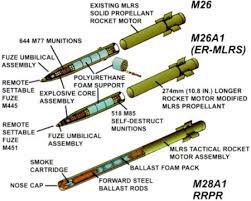

Bomblets were very effective in 1991 during Desert Storm, when MLRS gained nickname "grid square removal service". But quite a few bomblets would not explode, becoming an hazard on the ground. A low percentage, but it adds up over hundreds and indeed thousands of bomblets.
UXO (Unexploded Ordnance) problem became major concern, as a major hazard to civilians in an area of war. In december 1997, the UK signed up to the Oslo agreements on landmines and bomblets, and MLRS ammunition, carrier shells for AS90 and BL755 aircraft bombs were all affected. 

By April 2007, the incredibly effective MLRS sub-munition rockets were gone, all dismantled. BL755 bombs were eventually replaced by BRIMSTONE (a different, but still very effective way to hunt for enemy tanks), but the area attack capability of the M270 was essentially lost.
The MOD also had to give up the scatter-mine rockets as well. These rockets would deliver AT-2 anti-tank mines to a target area, but since the mines had an anti-handling device, they were accomunated to cluster bomblets and eliminated, cancelling a precious counter-mobility asset
In meanwhile, however, guided rocket was developed, and 200 lbs unitary warhead put in place of bomblets. Only the US put into service also a variant still using sub-munitions, albeit improved. This reduces, but does not eliminate, UXO risk and is only to be used "in emergencies"
UK has no sub-munition rockets anymore, and only uses the unitary warhead one. It fired hundreds in Afghanistan: GMLRS became the "84 km sniper", able to hit point targets with great accuracy. A fantastic system, but with limited utility against conventional forces in the open. 



Of course, there was a cost connected with this evolution and narrowing of M270's usefulness. UK had originally procured between 63 and 67 M270s (recollections vary!) but in the 2000s this was cut down with only 36 being updated to B1 GMRLS + 4 converted to Recovery vehicles. 




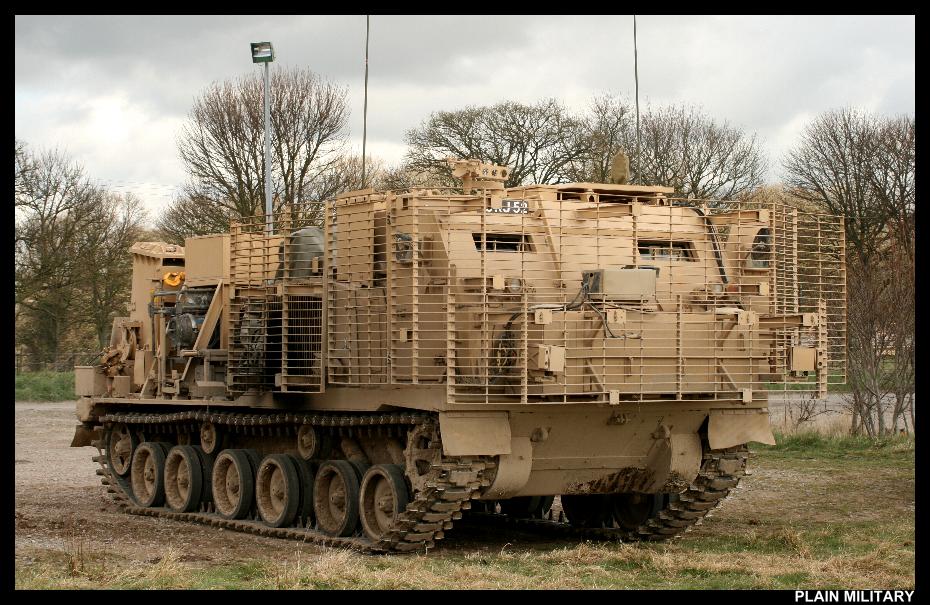
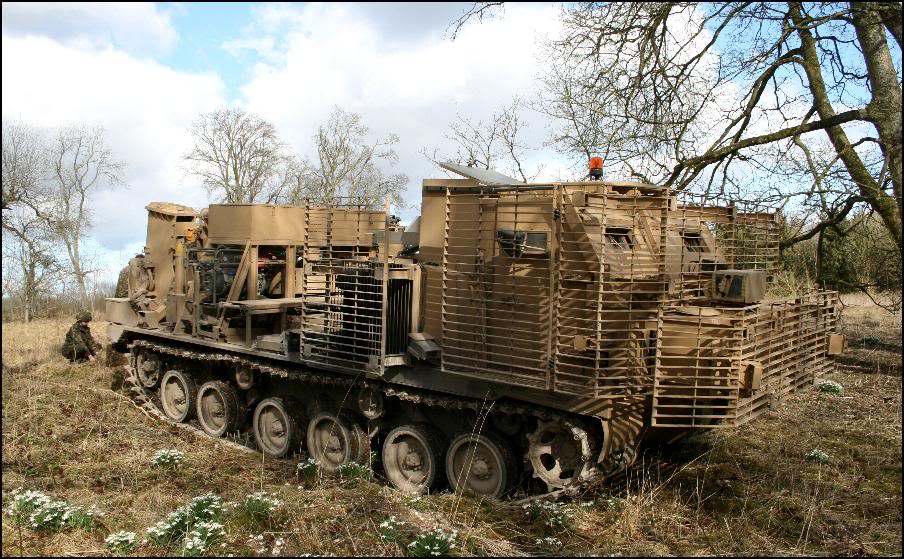

Unfortunately, it appears that non-upgraded launchers were, for most part, disposed of rather than stored. This now comes back as a problem to everyone that wants to re-activate launchers, because M270 production ended long ago. You can only upgrade existing vehicles.
UK, as i said, sent 6 launchers to Ukraine. As partial compensation, it struck a deal with Norway, that has a dozen old M270s, non upgraded, that it does not use. At least 3 of those will be given to UK, which will upgrade and re-activate them.
Under Future Soldier, a 1st uplift from 35 to 44 M270s had been decided, and now Army is trying to get to 75, plus 10 recovery vehicles (suggesting uplift from 6 to 10 batteries). Between M270s in UK and others sourced from US, Norway, etc, Army currently has line of sight on 61.
The US has since re-introduced an area-attack capability with no UXO risk, with the Alternative Warhead programme. No bomblets, it is based on advanced fragmentation instead. the UK so far has not acquired this, but is finally planning to. 

Moreover, in Most Important Project You Have Probably Never Heard About, the MOD, DSTL and Industry want to develop new carrier rockets with new area-attack, anti-armour & counter-mobility solutions, treaty compliant. Rockets would be used also to deliver sensors and EW payloads. 



Development of advanced payloads for GMLRS rockets could be a huge win not just for Army but for British Industry, with immense export potential. And rockets, in the meanwhile, are getting longer legs: the Extended Range entering production goes 150 km and might get to 200. 



Royal Artillery hoped to acquire the ATACMS missile, a 300 km weapon that fits 1 to a pod, in place of the 6 rockets. The Large Long Range Rocket requirement, like many others, was not funded, however. (Note how ATACMS pod is disguised to look like it is a "normal2 6-rocket pack) 





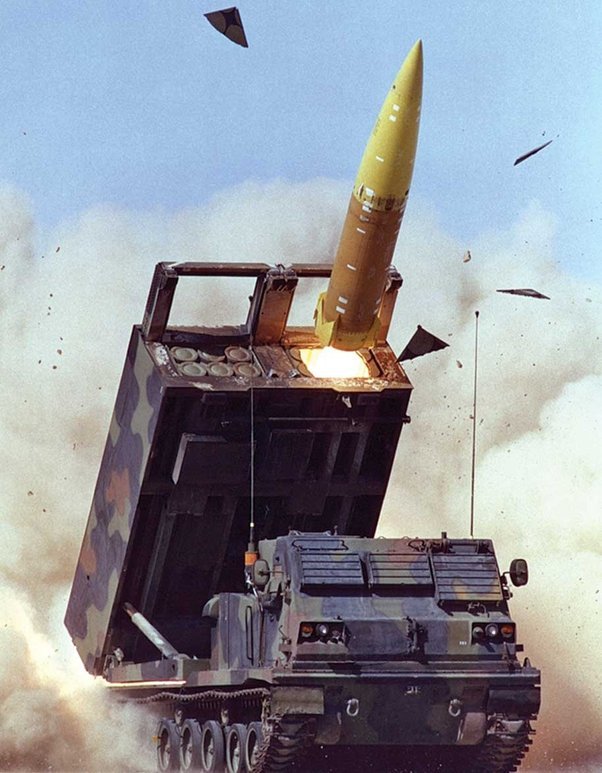
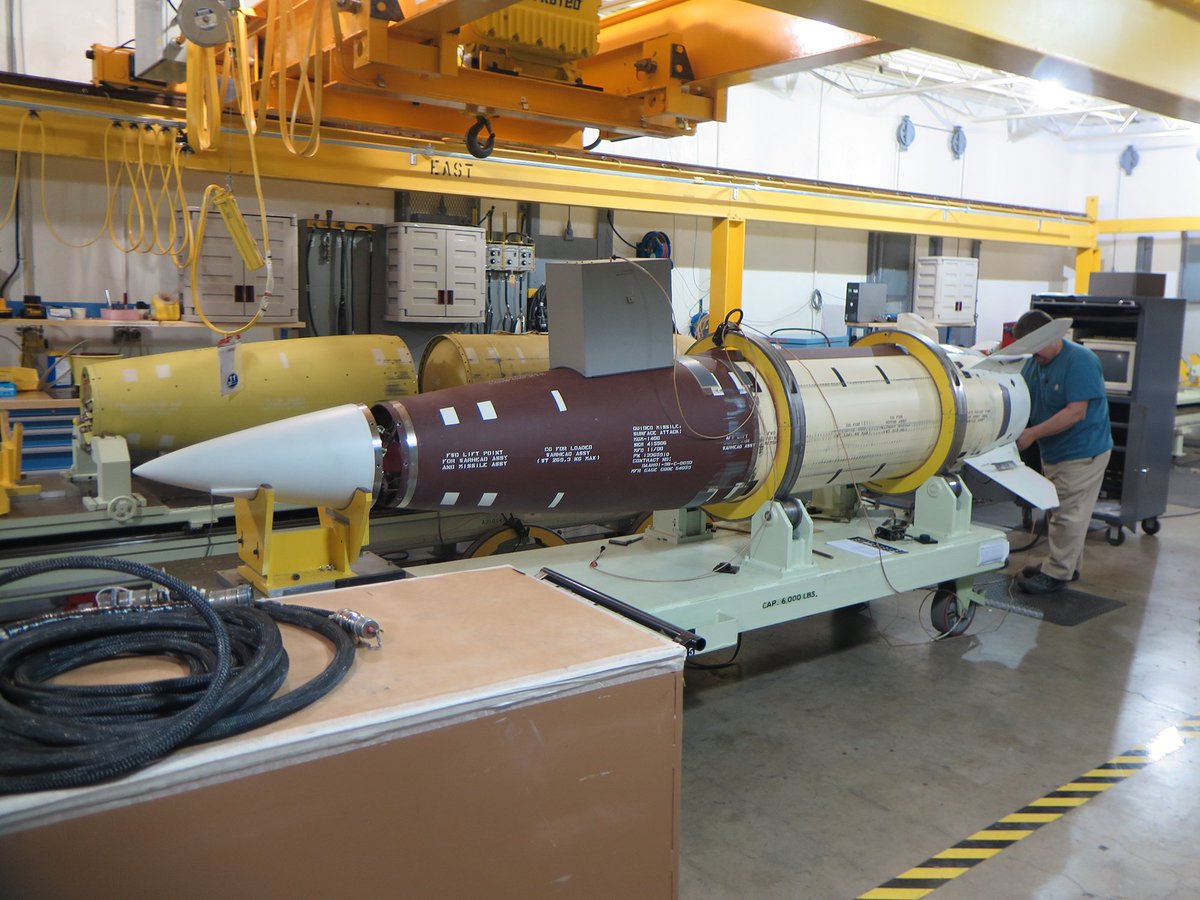
British Army is now planning to acquire (from 2024) the new Precision Strike Missile, production of which is starting in US. It flies 500 km and fits 2 to a pod, unlike ATACMS it replaces. In future will gain seeker to hit mobile targets, including ships, and its range will grow. 



Finally, in this veritable rebirth for the M270 which is going to be a true core capability of the British Army going forward, yet another munition is planned: the Land Precision Fires is to be an "overwatch" weapon hitting targets, including tanks on the move, 80 kms away. 

Concepts shown so far suggest it is an hybrid of CAMM and BRIMSTONE, with the latter (and/or SPEAR 3) providing the seeker and warhead while CAMM would give propulsion and, apparently, cold launch feature. M270 expected to fire it, although other options exist: 





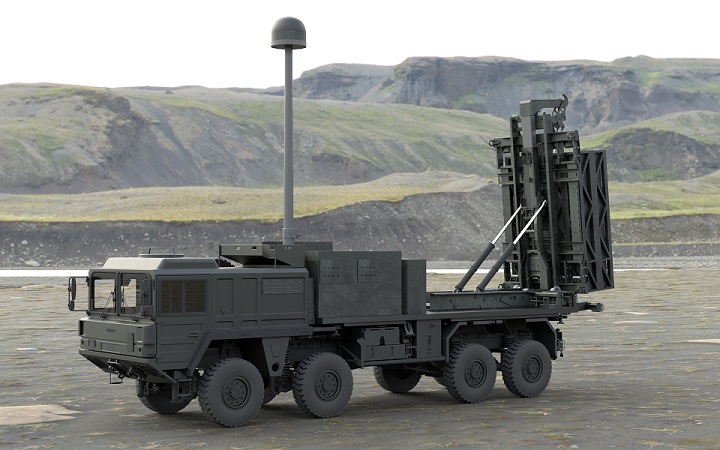

Finally, just as an item of curiosity, this you see here is under-calibre training rocket. You see how tiny the practice rocket is, to cut down range. US favors another kind of practice rocket: full calibre, but blunt head to shorten its range, as you see in the last photo. 





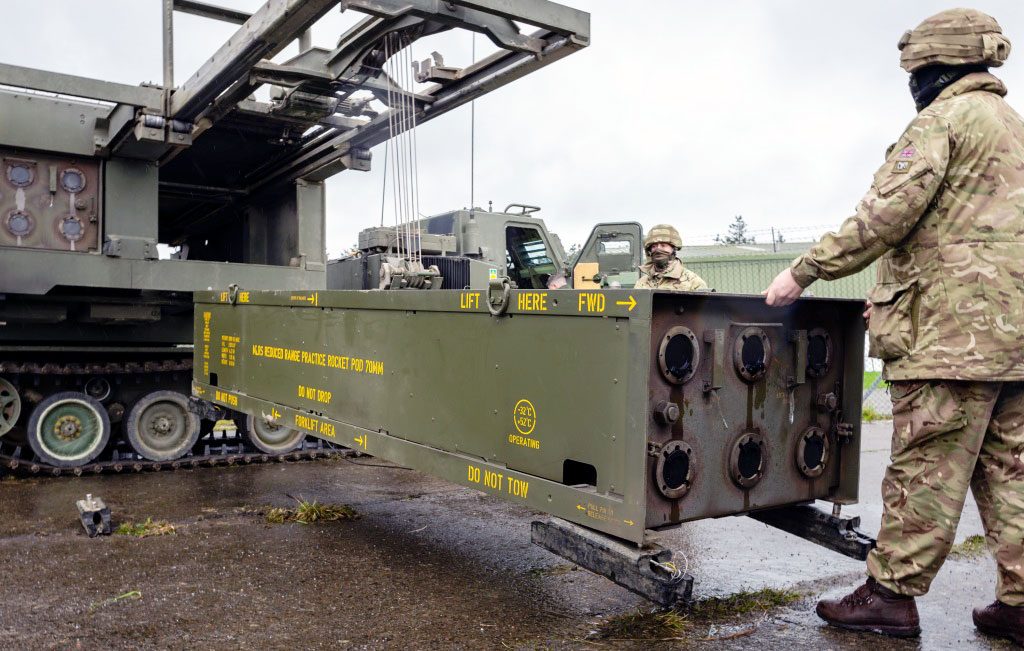

On the topic of GMLRS, it is worth adding a couple consideration on the upgrades to the M270 vehicle itself. The US call the latest variant A3 but for the UK it'll presumably be the B2. You can see the differences: the A3 is the one to the right in the picture. 

A3 upgrade brings the new Fire Control System needed to employ new ammunition such as Extended Range rockets and Precision Strike Missile. The automotive parts are updated and the engine brought to 600 HP in line with the Engineering Change Proposal programme for the BRADLEY IFV. 

It is very evident how the cab changes with the integration of the Improved Armored Cab. The british M270B1 will add a few british-specific improvements, including a "camera and radar" situational awareness system for the crew, and most notably Composite Rubber Tracks (CRT). 
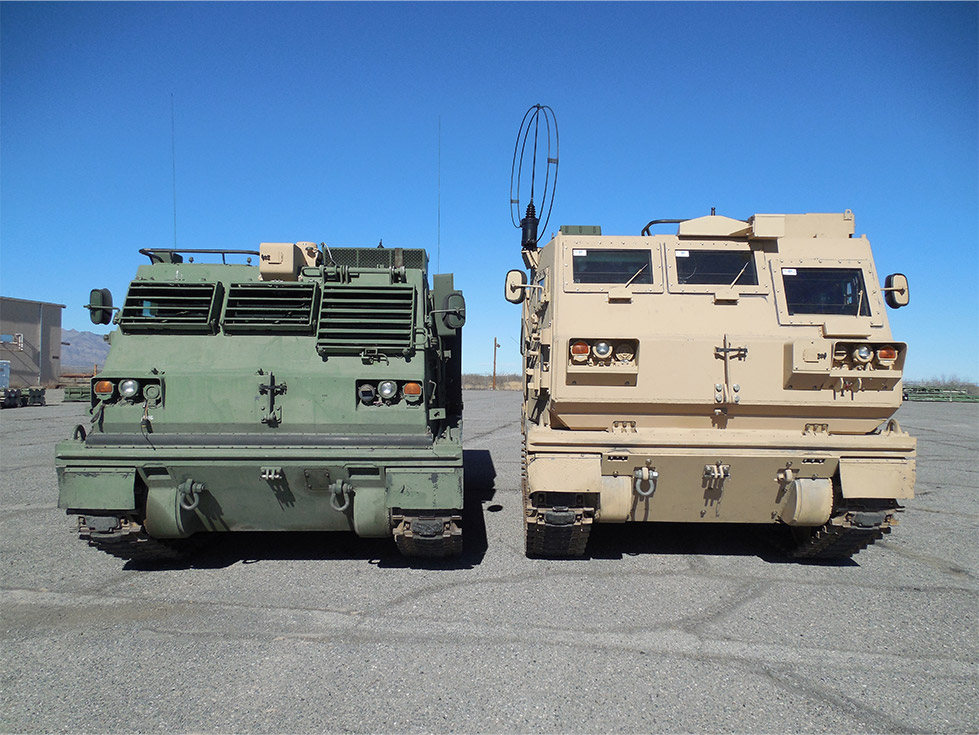
Composite Rubber Tracks bring many advantages, at least up to a certain weight class. Heaviest vehicles cannot (yet) use CRT, but trials with WARRIOR went extremely well. Trialed over 5000 kms, CRTs cut down vibration by 70% and noise by 13.5 decibel. Considerably lighter, too. 



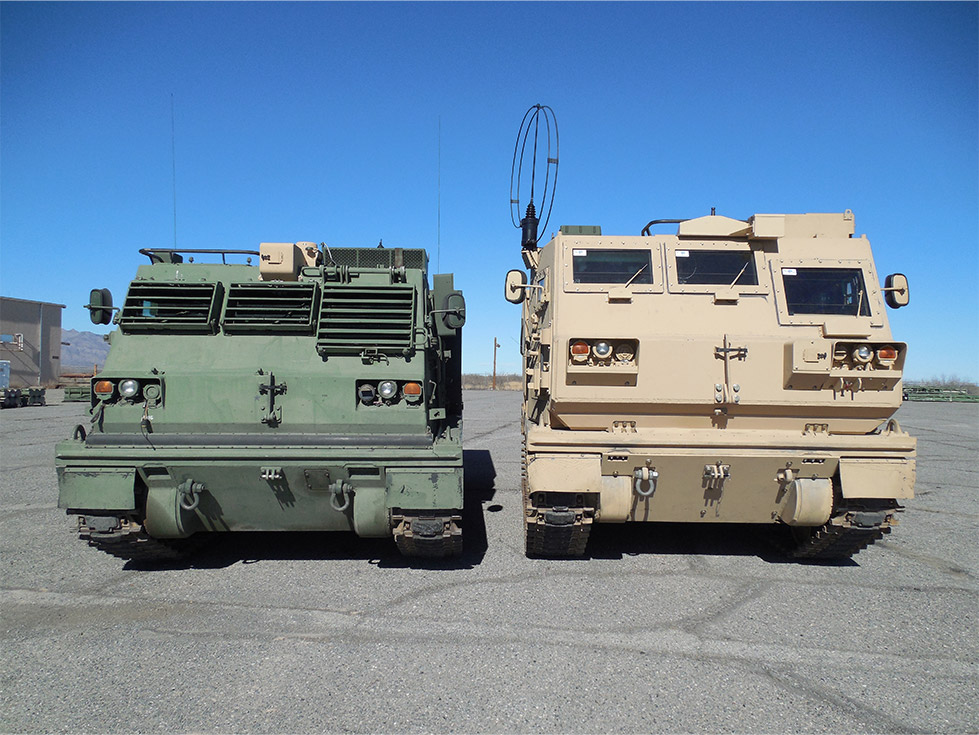



Going back for a moment to my AS90 thread (

https://twitter.com/Gabriel64869839/status/1614575331922288644) and to the AS90 replacement programme, you can see that Soucy with its Composite Rubber Tracks is also part of Team THUNDER proposing K9 to British Army. Rubber tracks are already found on CV90 and BvS10 VIKING.


To this day there is no evidence of AJAX planning to transition from steel to Composite Rubber Tracks, perhaps also because of its considerable weight that it's at upper end of what CRT can handle. But obviously something that reduces vibration and noise so much will be alluring. 







Finally, never a bad thing to remember the "british HIMARS", the ultralightweight LIMAWS(R). While HIMARS can be moved by C-130, LIMAWS(R) with exact same firepower could be slung under a Chinook! The artillery companion to FRES, it did not make it to service. Just like FRES... 




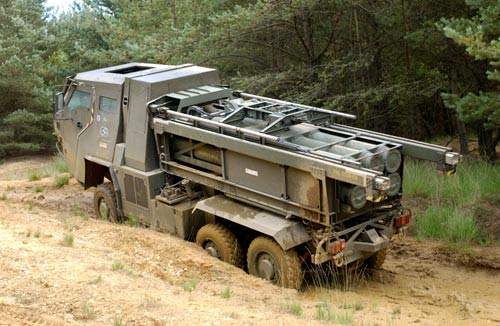
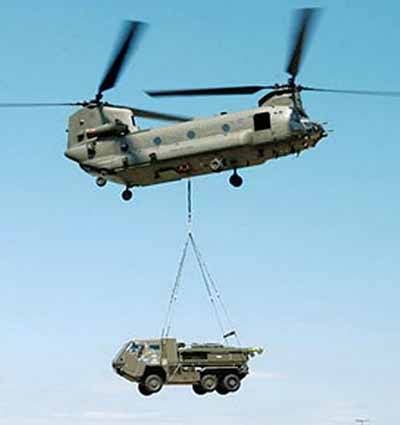

• • •
Missing some Tweet in this thread? You can try to
force a refresh
















